#s2project
Explore tagged Tumblr posts
Text


S2-WAVECRUSH v.00
-analog arcade stick for playing 3D action games
-SASI JLF analog mod for true analog movement
-generic thumbstick for camera control
-10mm buttons for dpad, as well as toggle and momentary switches to enable dpad directions on the stick
-custom layout with 24mm Qanba KS buttons and 30mm thumb and pinky buttons for triggers
-built inside an Ikea artist easel enclosure
demo videos:
youtube
youtube
3 notes
·
View notes
Photo
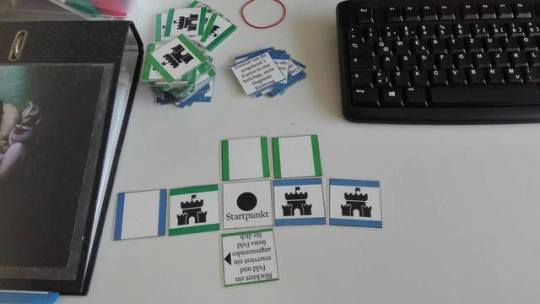
Digital Cardgame - Paper Prototype
Finished the the paper prototype of our cardgame. The rules are finally set, all game design documents are written and we already started working on the digital and final version.
I will post detailed information about the game soon.
0 notes
Text
S2:V07-PETIT PARADISI
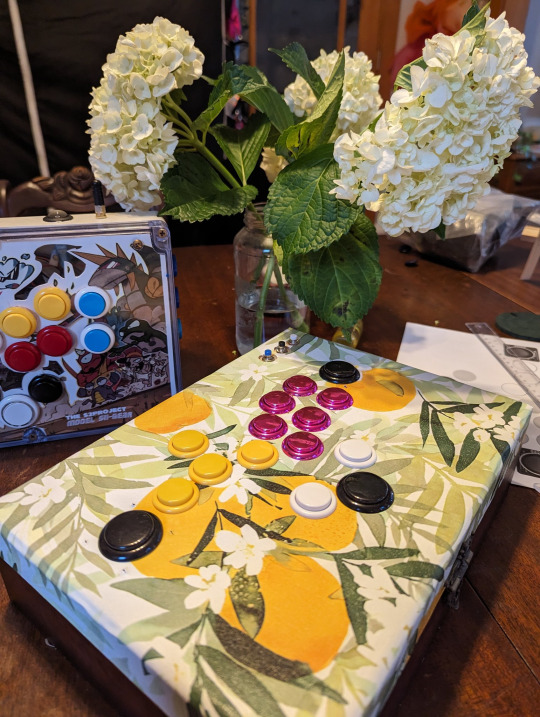
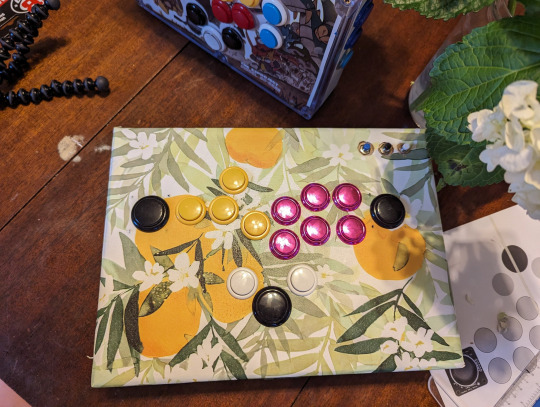



A leverless fighting game controller using the S2 ENGINE custom layout I've been refining. Combination of a WASD and Hitbox style layout, with the final column moved to thumb buttons, and two 30mm buttons at the pinky positions.
The front has a peg for guitar straps, and the strap lock can be used to hold cables. A latch lets you easily access the internals and extra storage. The left and right 30mm buttons can be swapped out for an analog stick using an Adafruit breakout board. Two headphone jacks on the side can be used to attached extra inputs, such as a foot pedal.
4 notes
·
View notes
Text
S2:V06- TWIN TANGRAM

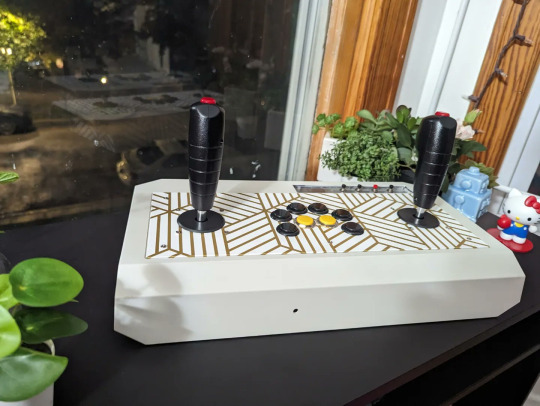
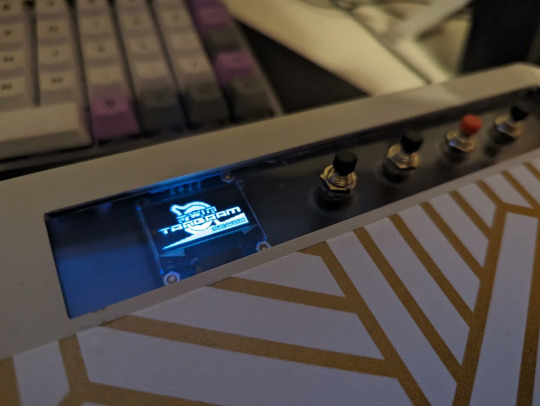

A digital twin stick controller for Virtual On, 8-way twin stick shooters, and more. Housed in the case of a Hori RAP VX-SA, the first arcade stick I bought.
A custom metal plate supports the joystick and buttons, and the cable door has been repurposed to pass through the usb signal and store the cable. The function button panel has been removed and replace with a transparent plexi panel that has function buttons and a status OLED mounted to it.
Uses the GP2040ce open source firmware and an Advanced Breakout Board by TheTrain.
3 notes
·
View notes
Text







fightstick illustration works
0 notes
Text




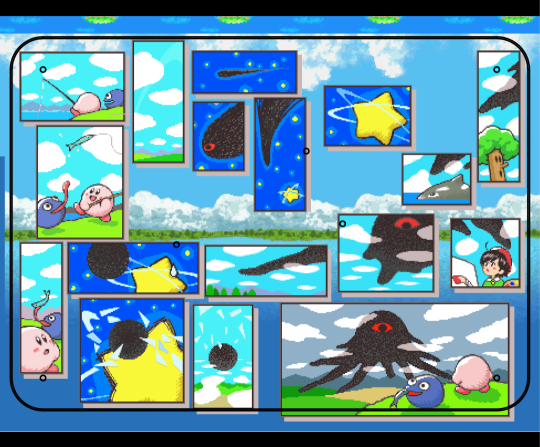
fightstick graphic design works
1 note
·
View note
Text
The S2 Engine: building a better Hitbox



The S2 Engine is a leverless controller layout intended to allow you to play a wider variety of games with arcade style controls. A revision of the S2 Drive, which was designed with retro style games in mind, it combines WASD style directional controls with the spacebar style jump button popularized by the Hitbox.
The goal here was to keep a “home row” position for your hands, with the consideration that it's much faster and more comfortable to close your fingers than to extend them.
Two thumb buttons allow easy access to the trigger buttons, with oversized pinky buttons for auxiliary functions. This has the advantage of allowing both thumbs to access the jump button, with the thumb buttons replacing the hard to reach pinky column, making it easier to hit or hold with other buttons.
youtube
The layout gives you the advantages of a regular leverless layout for fighting games, with the benefit of more intuitive navigation in menus, 2D action games and even 3D space. Combined with a remappable controller firmware, it allows a wider range of applications than both traditional leverless and arcade stick layouts.
I have two recommended button mappings, one more in line with the traditional fightstick layout, and a more universal one suited to all kinds of games.

The first remaps the third column from R1 and R2 to both shoulder buttons, with L1 on the top and R1 on the bottom. This allows easier navigation through menu tabs, instead of the reversed left and right positions of the shoulder buttons on a traditional layout.
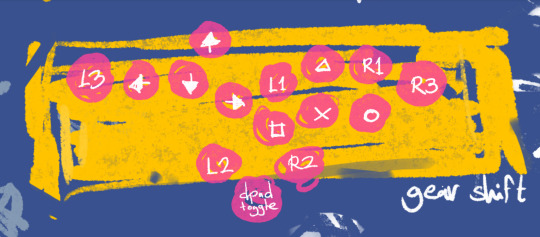
The second puts most of the face buttons on the same row, aligning them in a mirrored WASD position on the other side of the buttons, with the shoulder buttons flanking them. Square, cross, and circle are on the bottom row, with triangle above the cross button, and L1 and R1 to the side of the triangle button. Games commonly focus their main actions on the square, cross and circle buttons, so this allows you to access most of them at the same time without finger movement. The positioning of the L1 and R1 buttons allow more intuitive menu navigation, and directional actions.
Both trigger buttons are positioned on the thumb buttons to the side of the large jump button, with the up button duplicated in the WASD cluster, and the L3 and R3 flank the direction and action buttons.
LAYOUT DEMONSTRATIONS
Here's some example layouts as a demonstration.

For Street Fighter 6 this allows you to play with both classic and modern controls. On classic you get the usual 6 button layout on top, with the shortcuts for Drive Parry, Drive Impact or throw on the thumb or pinky buttons. You can even forego one of the up buttons to turn either into another macro. Personally, I use the right pinky for Drive Impact and the right thumb for parry, with throw and character specific functions on the remaining two.

On Modern this layout makes it easier to use the assist feature by mapping it to a thumb button, allowing the rest of your fingers to rest on top with the light, medium and heavy buttons, with some flexibility on where you'd like the special and shortcut buttons to be.

For Guilty Gear Strive I like to map the thumb buttons to dash and roman cancel, to get easy drift RC. I always found it hard to integrate the dash button in the main six button cluster, and this mimics the natural action of left trigger right trigger that I'm used to on controller.

For games with a block button the thumb buttons are a lifesaver. In Mortal Kombat, the top buttons handle the four attacks, throw and stance flip, while the thumb buttons allow me to hold block and call assists. MK always felt like it didn't have a good solution on a standard arcade layout. Either the attack buttons get stuck in the middle, or shoved to one side with the others requiring you to stretch to use all of them.

In Soulcalibur I keep the block button in the main cluster since I default to using the button combos instead of shortcuts, but I do like keeping the thumb buttons ready for stance macros and easy supers.

In Tekken 8 I use the the top 6 buttons for the standard 4 attacks and multibuttons shortcuts, with Rage on the thumb button, Heat on the right pinky and the left pinky for awkward button combinations.

How about something less conventional? Here's Gundam Versus. Typically you play this on an arcade stick since it only uses 8 directionals and a behind the back camera. The WASD cluster here makes it more natural and even lets you do moves like dashes and blocking (down to up) faster. Again, you can give up the larger UP button and use it for communication commands, or burst.
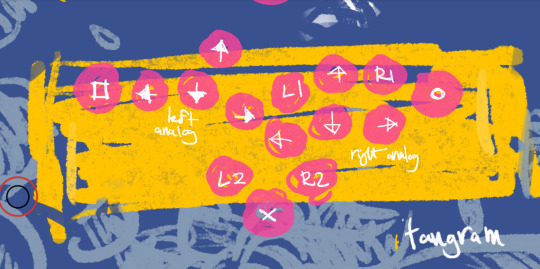
And here's Virtual-On. This makes it easier to hit the turbo modifiers and attack buttons together and perform fast jump cancels. You can even emulate the twin stick setup of the arcades with it. Which is also useful if you want to play some 8 way twin stick shooters.
If you're running GP2040CE you can even use it for 3D action games. A lot of action games don't rely on analog inputs, only differentiating between 8 directions and rarely needing to walk, and often allow you to get away with centering the camera behind the back with a button instead of messing with the right stick. Simply set the directions to the left analog stick, and set the bottom jump button to a dpad modifier so you can access those functions.
This works great in PS2 era action games like Nightshade, which requires you to quickly chain movement and attacks, or older Devil May Cry games, where it's much easier to perform precise inputs like enemy step attacks.

On my personal controllers, I've even added aux ports that allow me to plug in pedals, to go full pianist style, getting quicker reactions for shortcuts like Drive Impact, or adding modifiers to control the camera.
And of course, since it was designed with retro games in mind it works great for that, easily adapting to the six button layouts of the Genesis, Saturn and arcade games, and allowing you to play SNES games that rely on the shoulder buttons much easier.
HOW DO I BUILD ONE?
So how do you get this layout? For my part, I've mostly been creating prototypes for this layout by hand, with a power drill and step bit. But for my final build I went to Eternal Rival with my custom layout, and other case builders such as Jonyfraze, and AllFightSticks can also do custom layouts.
I originally finished this layout over a year ago, before Street Fighter 6, and those were kind of your only options for thumb buttons. Since then the leverless controller scene has blown up with different takes, and you've got quite a few options for something similar.

I personally like Mavercade's KeebBrawler-04MX, with its pill shaped buttons and split layout, but they also have a Keebfighter line with some similar layouts.

The Zenpad Duel has a split dual thumb button layout, and Attachon and Rush box have layouts with pinky and thumb buttons. Jonyfraze offers the 6GAWD for both leverless and fightstick builds. Hell, you could even go for something like a box style controller for Smash.

I'm less impressed with the offerings from companies like Haute42, which seem to just staple buttons onto the existing layout with no consideration for access or aesthetics, but they are an option for those looking for a cheap way to test a thumb button layout.
Whatever way you choose to go, it's undeniable that we're in an era of rapid controller innovation, with tons of different philosophies on how to build better controllers, and fresh ideas coming out all the time. The S2 Engine is what works best for me, but with so many options out there now, it'd be a waste to not experiment and find your personal favorite.
0 notes
Text





UNBREAKABLE BOND: Sonic and Tails themed linking fighsticks
-features the S2 DRIVE, an Allfightsticks 9.5" SEGA 2P mini arcade stick, alongside the mi2con (aka miNIcon), an even smaller arcade stick built inside a project box
-S2 Drive features a Seimitsu lever and buttons, and the mi2con has a rotary encoder for playing arcade games with rotary joysticks or spinners
-ethernet ports on the sides allow the mi2con to connect to the S2 Drive, allowing it to be used to add extra controls for training mode, or right stick and camera controls
1 note
·
View note
Text


GRAPEFRUIT FIGHTER ABBADON MK 2
-handmade leverless controller with vinyl wrap and "S2 ENGINE" custom layout
-GP2040ce Advanced Breakout Board
-Qanba Gravity KS Silent buttons
-4 aux jacks on the side for external buttons
1 note
·
View note
Text
Haute42/Cosmox Hautepad P12 Review

The latest in Haute42’s (Cosmox?) line of budget leverless controllers, the confusingly branded Cosmox Hautepad P12 takes a back to basics approach, bucking the wild layouts and constant iteration of their main controller lines. Instead it offers the traditional 8 button leverless layout, housed in an injection molded plastic case--a first for the brand.
The case itself takes more than a few design cues from Razer’s Kitsune, with a stark black color scheme, pill shaped start and select buttons, with round auxiliary function buttons. Where it does differ is in the size and variety of functions. The P12 is definitely a miniature controller, reminding me of Hori’s Fighting Stick Mini line, though thankfully more functional.
It’s lightweight and shows its budget construction, but the smooth edges of the molded case, anti slip pads and good buttons give it a pleasant finish compared to other Haute42 offerings, which often have an almost DIY feel to them. The low profile switches and lack of a top plexi panel make customization limited, but that’s to be expected.
Like other Haute offerings, the P12 runs the open source GP2040ce firmware, giving it an edge over licensed controllers with multi system compatibility, including PC, Switch, PS3, PS4 and even limited Xbox and PS5 support with the purchase of a passthrough device. It takes some work to get it running, but all the software for configuration is right on the controller itself, allowing you remap your controls, set multiple profiles, and set up shortcuts from a web browser. I set mine up with profiles for fighting, action and rhythm games, with the turbo button remapped as a function key for easily swapping between them.

The size and lack of a WASD style up button makes the P12’s utility outside of fighting games limited, and feels quaint compared to the variety of experimental layouts found elsewhere, but as an entry level leverless, often found retailing at the 50USD range, it’s hard to argue with the value presented.
1 note
·
View note